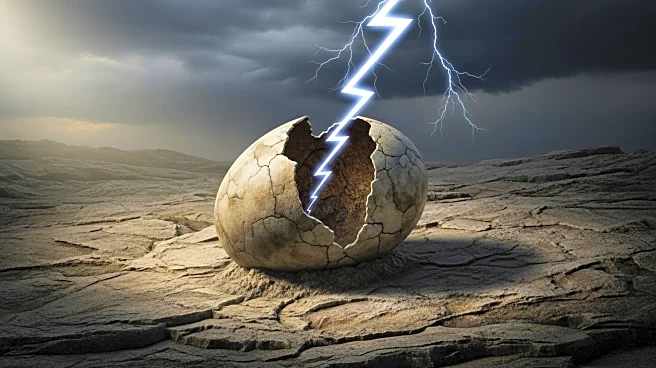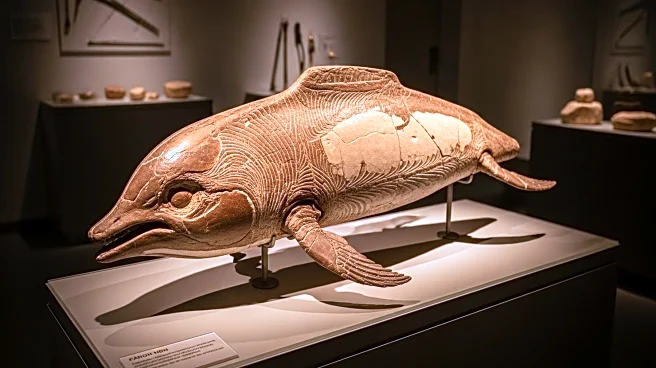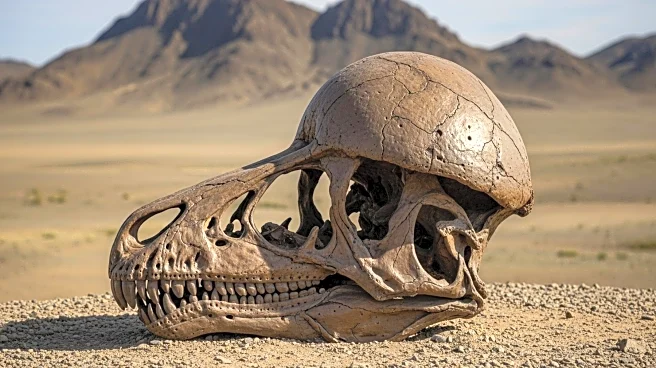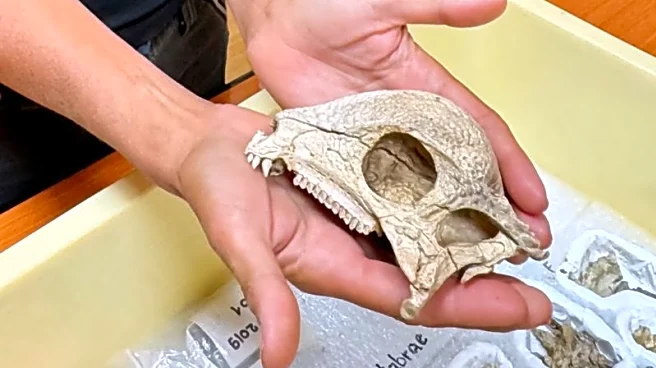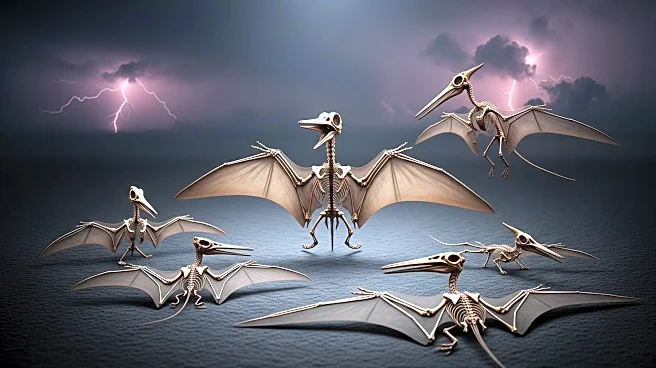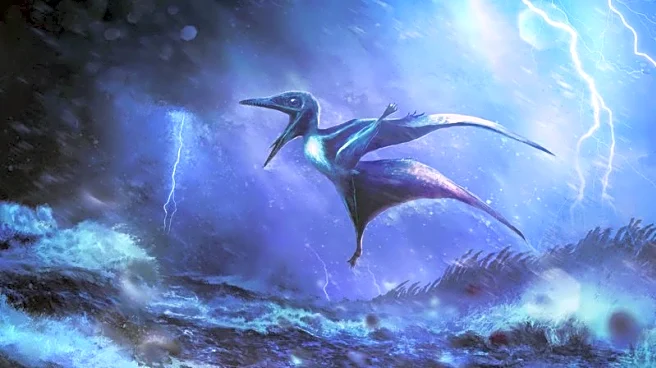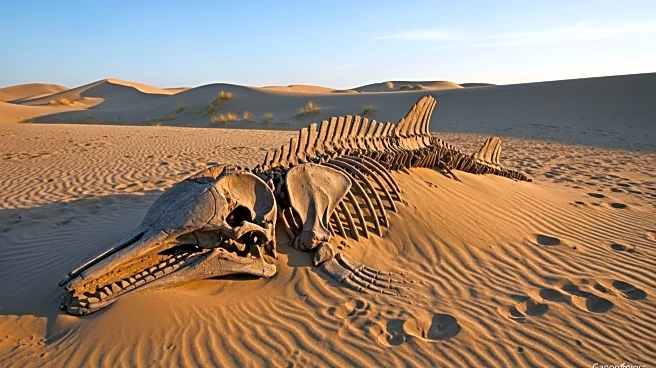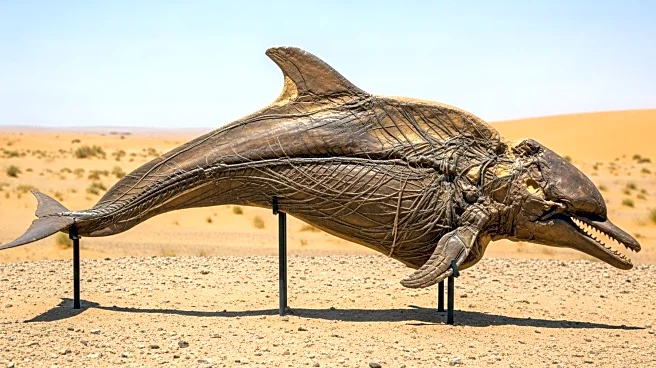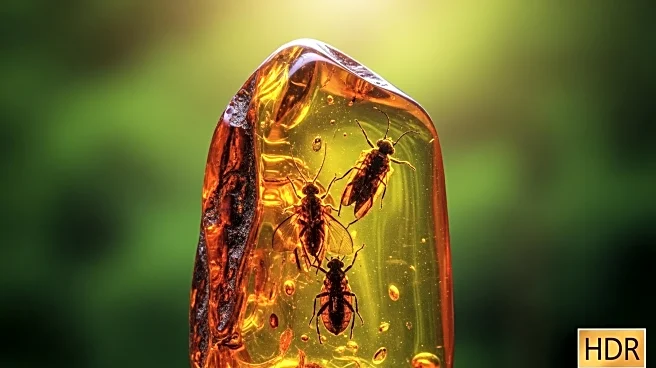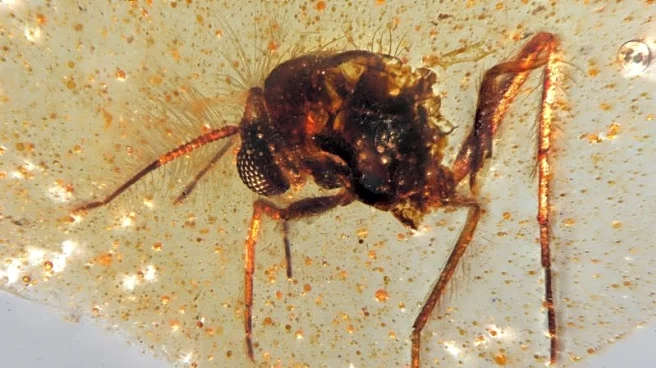What is the story about?
What's Happening?
A recent study published in Current Biology has uncovered evidence of how two baby pterosaurs, nicknamed Lucky and Lucky II, died during the Jurassic Period. Researchers believe a powerful storm caused the young pterosaurs to spiral into a lagoon, where they drowned and were rapidly buried by mud stirred up by the storm. The fossils, found in southern Germany, are remarkably well-preserved, providing rare insights into the circumstances of their deaths. The study suggests that the storm-induced burial preserved the delicate skeletons, which are among the smallest pterosaur specimens ever found.
Why It's Important?
The discovery offers valuable insights into the fossilization process and the environmental conditions of the Jurassic Period. It highlights the role of natural disasters in shaping the fossil record, providing a unique perspective on how prehistoric ecosystems were affected by climatic events. This research contributes to the understanding of pterosaur biology and behavior, particularly their vulnerability to environmental changes. It also underscores the importance of paleontological studies in reconstructing ancient life and understanding the evolutionary history of flying reptiles.
What's Next?
Researchers aim to further investigate the flying capabilities of hatchling pterosaurs, which appear to have been able to fly shortly after birth. This could lead to new insights into the development and survival strategies of early flying animals. The study may also prompt additional research into the Solnhofen Limestone deposits, where many small pterosaur fossils have been found, to better understand the ecological dynamics of the region during the Jurassic Period.
Beyond the Headlines
The study raises questions about the impact of prehistoric storms on biodiversity and the fossil record. It suggests that similar events may have influenced the distribution and survival of other species, offering a broader understanding of how natural disasters have shaped evolutionary history. The findings also highlight the challenges of interpreting fossil evidence, as the conditions leading to fossilization can introduce biases in the record, affecting scientific conclusions about ancient ecosystems.
AI Generated Content
Do you find this article useful?
